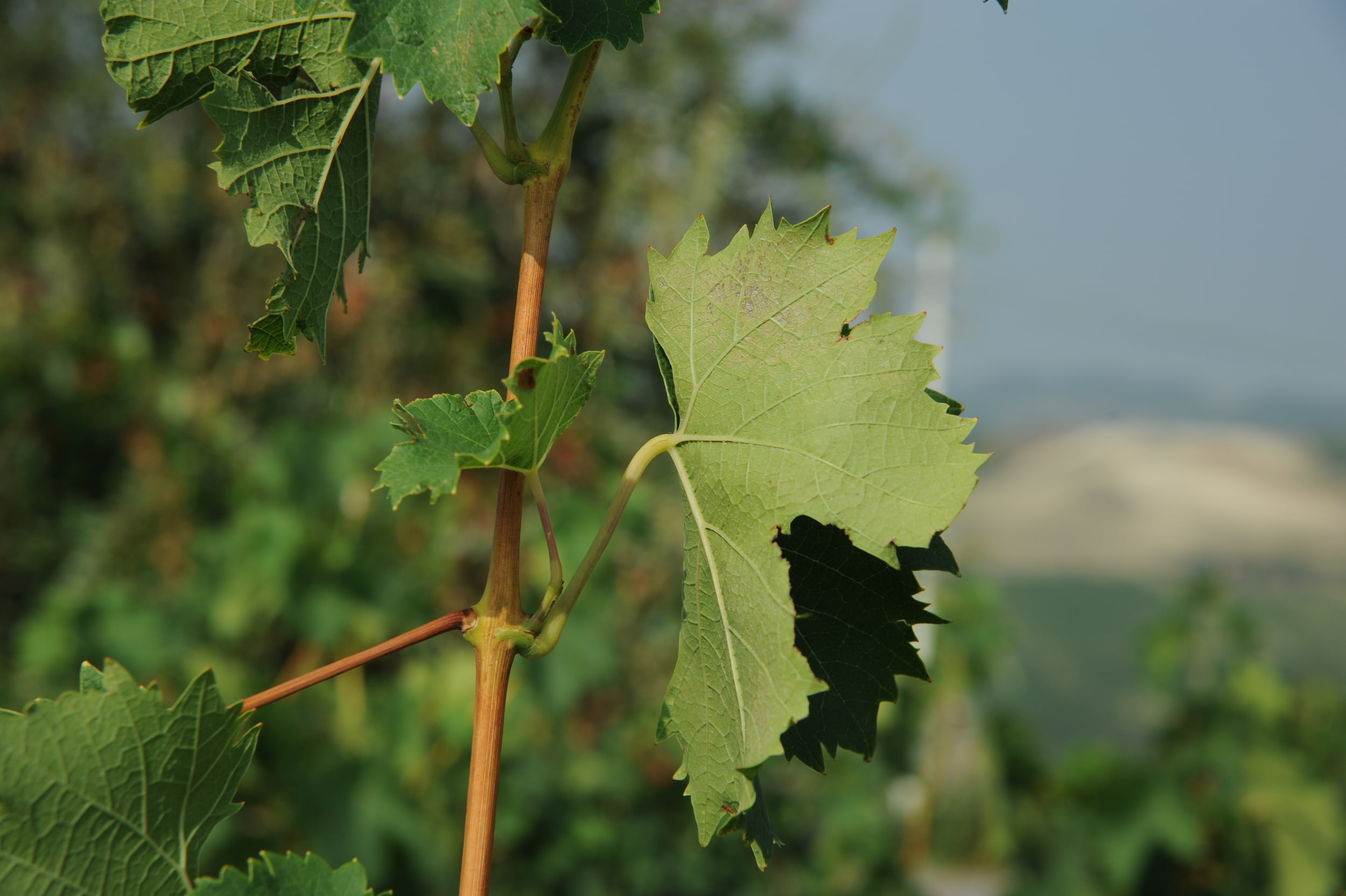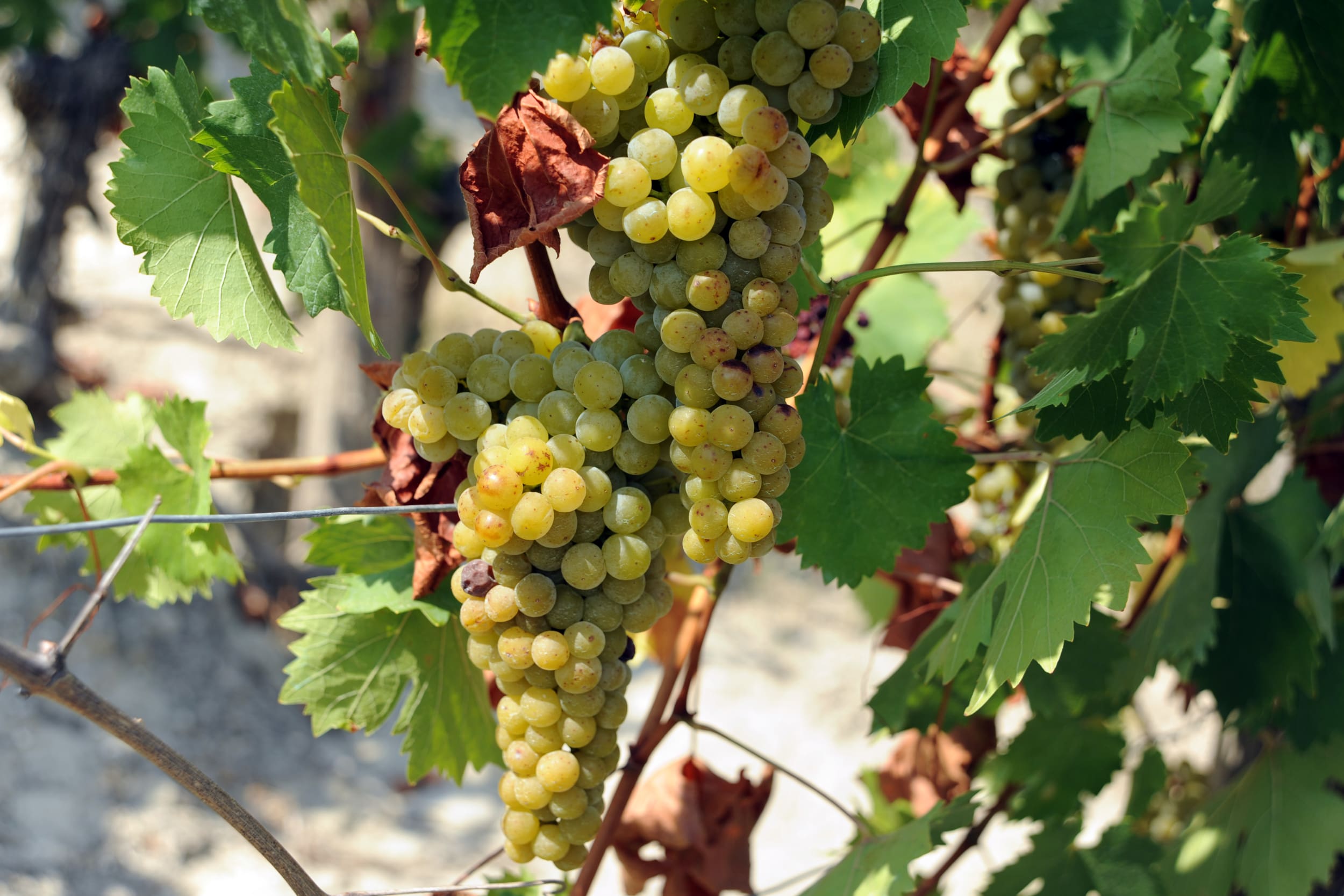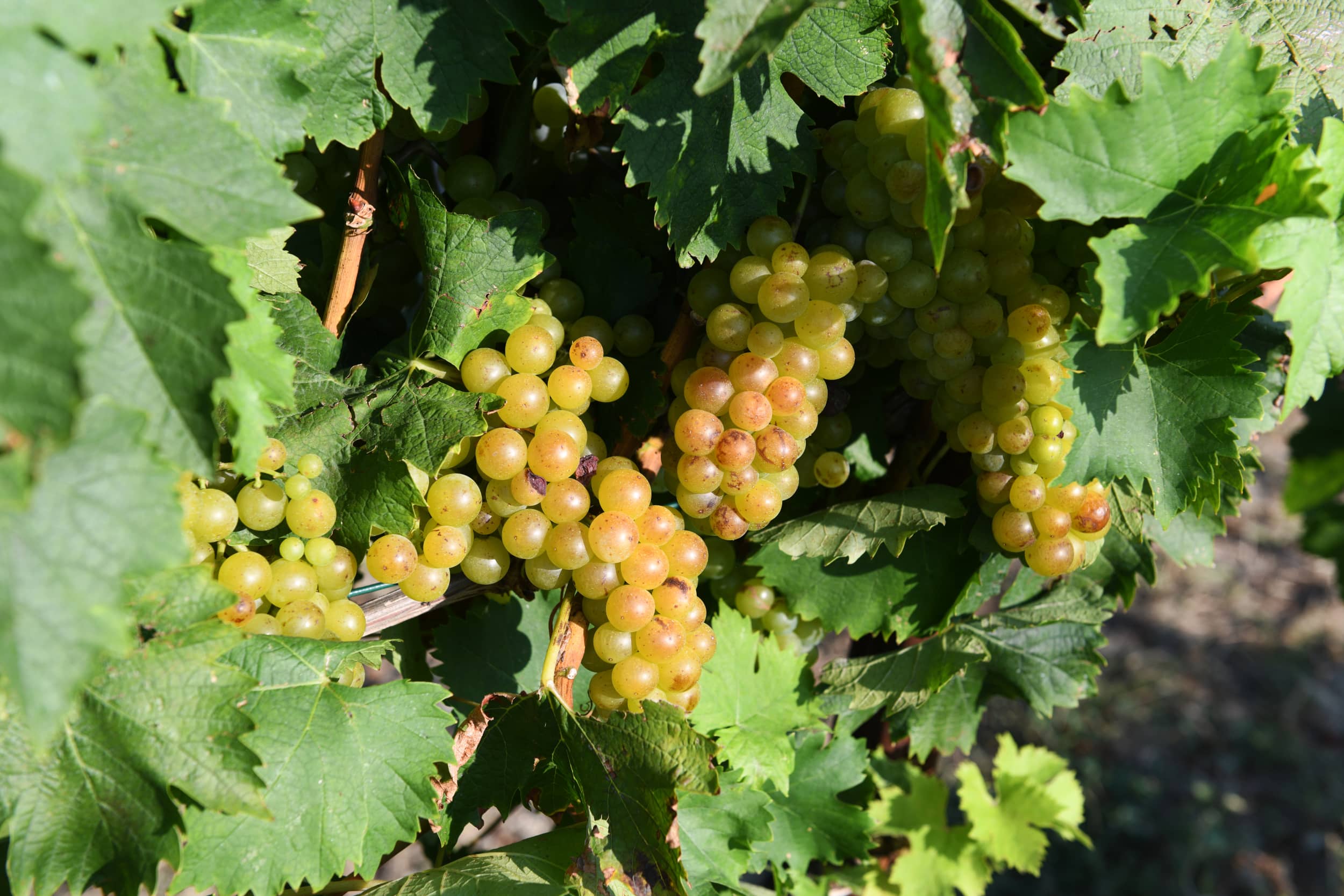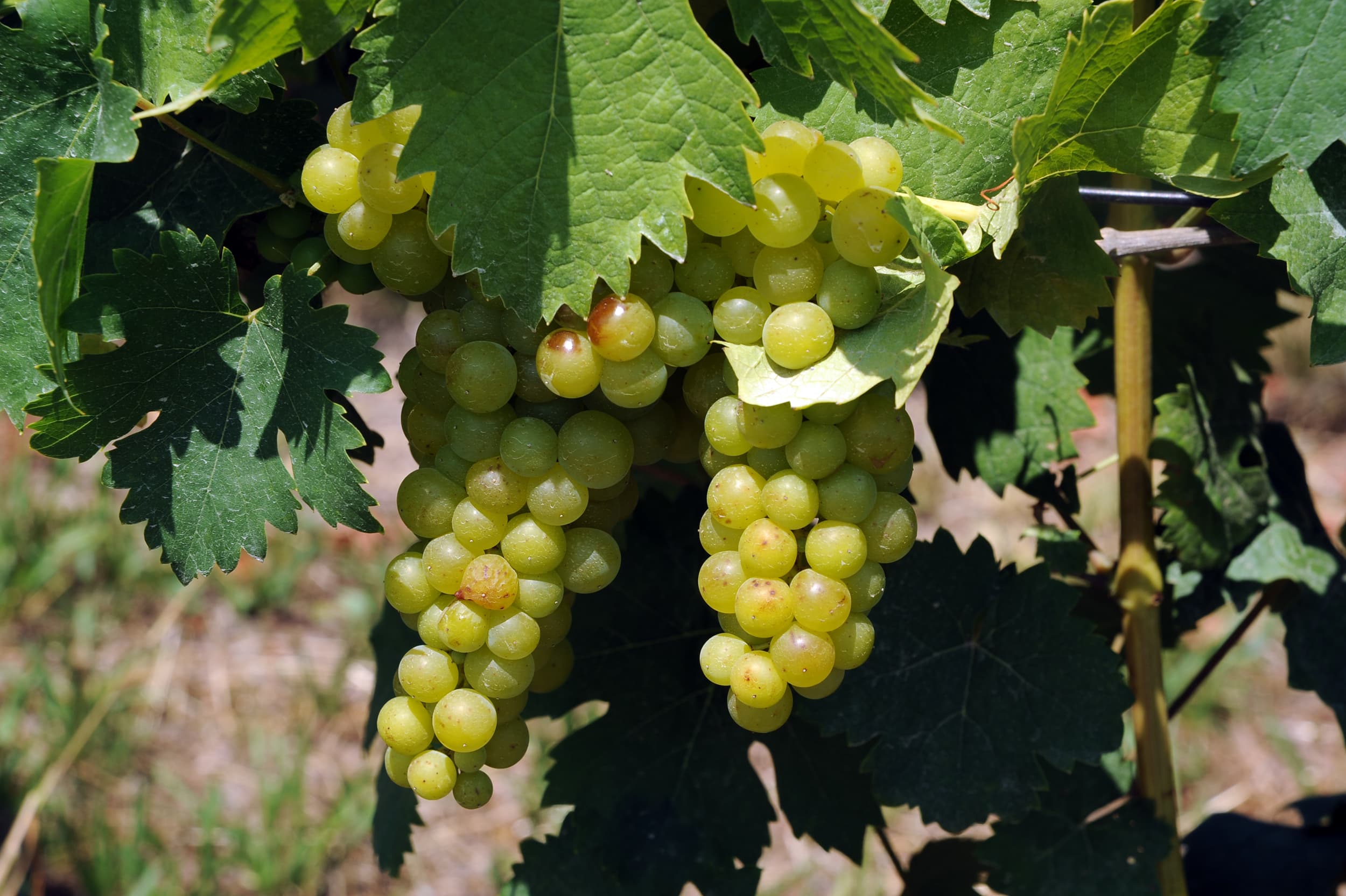The temporary withering of the leaves
The arrival of summer weather is often sudden. The heat catches the vines in a moment of intense vegetative activity, during which a cool environment would be more favourable. After a few weeks, the water resource tends to no longer be sufficient.
The suffering
When in the month of July the berries have almost reached their definitive size, the first phenomena of suffering can be noticed, such as the partial and temporary withering of the leaves. The greatest manifestations are detected during the afternoon hours, while in the morning the vegetation seems to have greater turgidity.
This condition of stress, although limited to the hottest hours, is harmful. In fact, plants need to supply themselves with water autonomously and continuously. In the case of the vine, this need is particular in the moment of the rapid herbaceous growth of the berries.
The damage caused by water shortage mainly consists in the slowdown of the various synthesis activities of the substances necessary for the constitution of tissues. Often there are no obvious signs of suffering: in the most serious cases, they consist of partial withering.
More serious symptoms appear in dry summers, when the processes of accumulation of substances in the bunches and in the branches have started (period of veraison and August). The adult leaves present in the fruit area begin to turn yellow, then dry up and then fall off.
The greater gravity of this second moment is determined by the complexity and delicacy of the physiological phenomena in progress and by the already prolonged period of absence of rain. Also in this case it is easy to observe the most intense suffering in the afternoon hours and a recovery of vitality in the early morning hours.
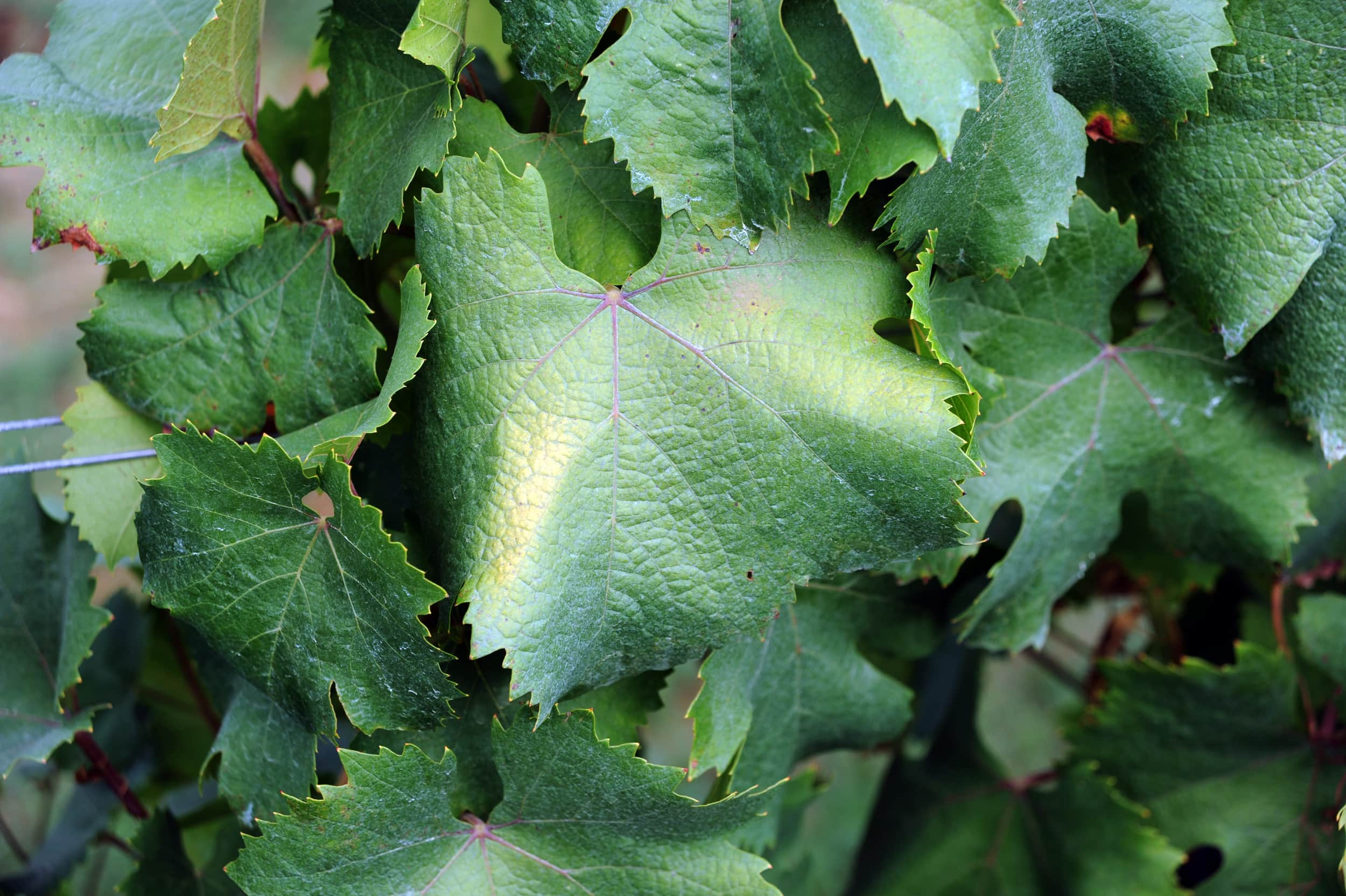
Temporary recovery
During the night, it is possible that a thin film of water settles on the surface of the leaves due to the condensation of the air humidity in the cooler night hours. This small contribution is certainly beneficial, even if not lasting and insufficient to justify the appearance of better well-being of the leaves in the morning. All this can be explained by considering that in plants the acquisition of water by the root systems overlaps with the transpiration by the leaves. There is therefore an equilibrium of quantity between the two functions. During the hours of the day, the loss of water from the leaves is greater than during the night and after a certain number of hours those typical manifestations of the deficiency appear, such as the folding of the leaf blade downwards. During the night however, when transpiration is lower, the water balance is in favor of the plant. It is in fact able to slowly reconstitute the cellular turgidity lost the previous day. The joint effects of wetting (secondary action), with the possibility of replenishing water reserves in the tissues (main action) allow the plant to start the new day with renewed vigour. However, the danger of serious suffering with even irreparable damage is real. It is therefore necessary to evaluate the possibilities of aid that the cultivation practices offer.
Cultivation
The type of land management has a certain influence. The choice between grassed or tilled soil must take place according to its physical composition (sandy or clayey). In both cases, specific considerations regarding drought are required. The stable turf, in fact, also consumes a certain amount of water and the main losses from the surface occur almost exclusively by transpiration from the grass leaves and less by direct evaporation. In order to reduce the former as much as possible, it is necessary to always keep the grass well shaved, thus preventing some species more resistant to drought from being selected.
Mechanical tillage is the operation that allows the greatest amount of water to be retained in the soil. However, it is not advisable in all soils, as it can cause other forms of stress such as, for example, iron chlorosis from limestone. If in any case it is to be considered appropriate, it is necessary that it affects only the most superficial layer with a high level of crumbling of the clods. Thus a kind of finely disintegrated insulating layer will form, interposed between the atmosphere and the subsoil.

Plant prevention
Further care can still be reserved directly for the vines with more precautions:
- do not stimulate shoot growth too much in the hottest months of midsummer
- resort to frequent and limited trimming
- eliminate as a priority, through green pruning, rapidly growing vegetation (females), respecting the already hardened leaves
- carry out early thinning of the bunches, proportionate to the conditions of suffering that the plants show, in case the stress is very evident.
Finally, the supply of foliar nutrients such as potassium, phosphorus and microelements provides another aid to the vine. The administration of nitrogen in this season is always strictly to be avoided.
The spraying of water directly on the leaves during the day is to be considered a marginal operation, in the late evening, however, it would provide a supplementary contribution to that of the nocturnal humidity on the leaves.


